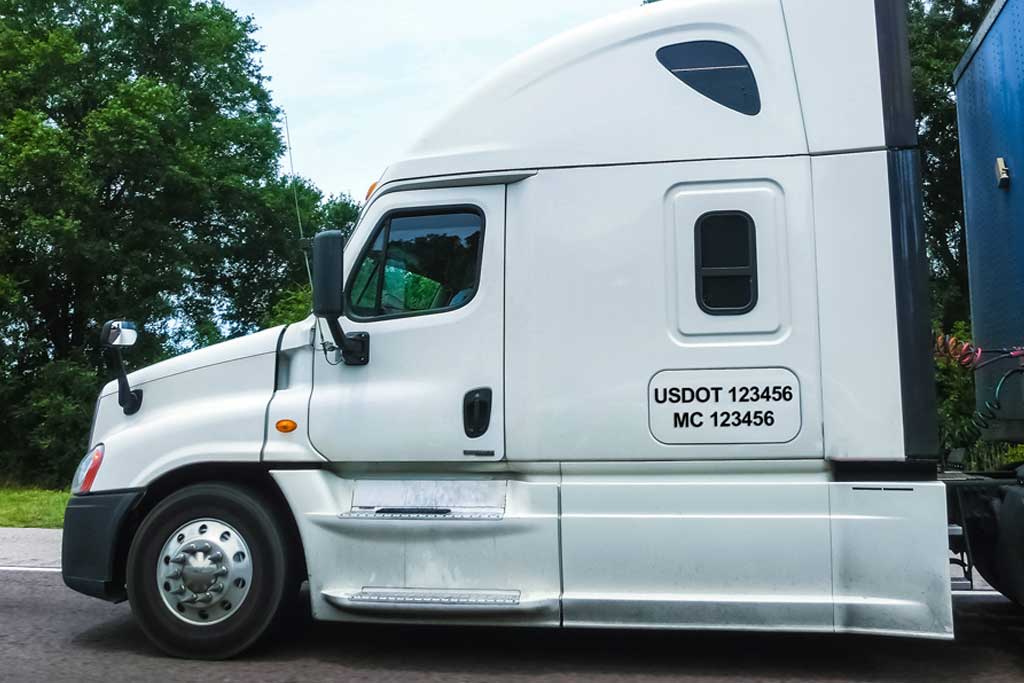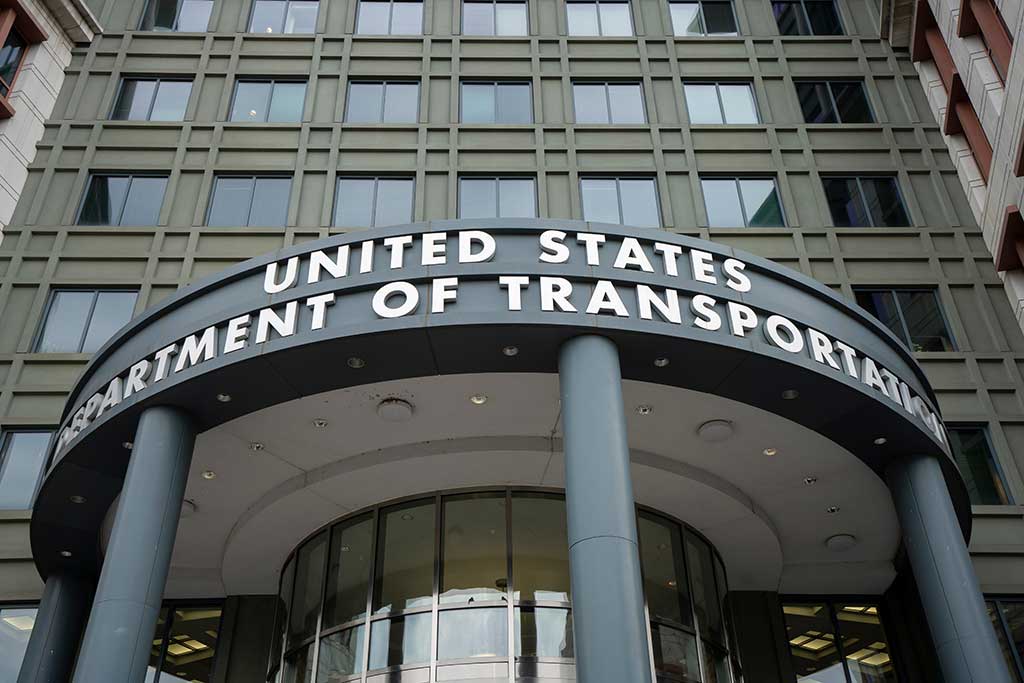How will new regulations impact car shipping in 2025?
A new administration coming into the White House inevitably comes with change. And many of these modifications will involve the logistics and trucking industry and have an impact on our clients, carriers and drivers.
For the most part, the outstanding rule changes are geared towards improving safety and mitigating fraud. But these rules and regulations can change at any time. Keep an eye on the Federal Motor Carrier Safety Administration (FMCSA) website and the news for additional updates. We will do our best to keep you informed as well. Here’s the current landscape as we know it.
New FMCSA registration system
As of January 2025, FMCSA Registration Options have been integrated into the FMCSA Portal with the goals of:

- enhancing security
- combatting cargo theft
- reducing fraud
- complying with the Presidential mandate for Multifactor Authentication (MFA)
These measures ensure a secure and reliable experience for motor carriers, enabling them to update their company registration information directly in FMCSA Portal. And it gives customers peace of mind that they are working with a reputable and licensed carrier.
One of the new security measures, and perhaps the biggest change, is the full-facial scan for ID verification. Only verified users will be able to proceed through the system. This measure, in particular, speaks to trying to mitigate fraudulent registrations.
It’s also trying to stop what’s called “double brokering.” Double brokering is when the original carrier given a shipment proceeds to give it to a different carrier without the knowledge or consent of the party that owns the cargo and/or the auto transport company. In many situations, the secondary carrier is falsely representing themselves as a qualified and vetted carrier when they aren’t.
This is considered fraud by the FMCSA. And, when double brokering occurs, it represents a breach of contract. This is the case for carriers who work with Reindeer Logistics as is written in our contracts.
USDOT numbers instead of MC numbers
With the release of its modernized registration system, FMCSA will stop using MC numbers. Instead, and consistent with statutory requirements, the U.S. Department of Transportation (DOT) number will be the sole identifier for all FMCSA registrants.

Historically, MC numbers were used by the FMCSA to track proceedings related to a single operating authority registration and not to identify a specific person, employer, operator, motor carrier, broker, or freight forwarder. So, some companies with an MC number also had to have a USDOT number.
But not anymore. The need for separate tracking numbers for each type of registration became unnecessary when all operating authorities became nationwide, with the elimination of route-specific and contract authorities.
Even though all FMCSA registrants must have a USDOT number, MC numbers will not be replaced by USDOT numbers. Instead, MC numbers will be phased out. Specific types of operating authority registration will now be indicated by a suffix to the USDOT number for each type an entity may hold.
The USDOT number serves as a unique identifier when collecting and monitoring a company’s safety information acquired during audits, compliance reviews, crash investigations, and inspections. It is up to the motor carrier operators and drivers to know and comply with all applicable Federal Motor Carrier Safety Regulations to stay in compliance and operate safely.
So, who needs a USDOT number?
With the new system, companies who operate commercial vehicles transporting passengers or hauling cargo in interstate commerce must be registered with the FMCSA and must have a USDOT number. Also, commercial intrastate (existing or occurring within a state) hazardous materials carriers who haul types and quantities requiring a safety permit must register for a USDOT number.
Here’s a quick breakdown to simplify it:
A company is required to obtain a USDOT number if they have a vehicle that:
- is used to transport the types and quantities of hazardous materials requiring a safety permit in intrastate commerce.
OR
- has a gross vehicle weight rating of 10,001 pounds or more; or
- is designed or used to transport more than 8 passengers (including the driver) for compensation; or
- is designed or used to transport more than 15 passengers, including the driver, and is not used to transport passengers for compensation;
AND is involved in interstate (between more than one state, including a place outside the United States) commerce trade, traffic, or transportation in the United States.
Why is this important?
Prior to a carrier transporting any vehicle, the carrier must show proof of a valid and active USDOT number. It attests to a carrier’s compliance with the FMCSA regulations and all federal insurance and process agent requirements. In essence, it should indicate safe and compliant operations.
There are significant requirements to stay compliant with DOT and FMCSA regulations. Some of the various requirements include (but are not limited to):
- Proof of insurance
- Motor vehicle reports
- Drug testing records
- Driver rosters and driver qualification files
- Service provider contracts
- Hours of service (HOS) records
- Vehicle inspection, maintenance, and repair reports
- Employee training records
- Incident and accident reports
- Quarterly International Fuel Tax Agreement (IFTA) reports
A new era at the U.S. Department of Transportation
On January 28, 2025, Sean Duffy was officially sworn in as the 20th Secretary of the U.S. Department of Transportation (USDOT).

Secretary Duffy’s first official act was signing a memorandum directing staff to start the process of rescinding or replacing all Corporate Average Fuel Economy (CAFE) standards for all models of motor vehicles produced from model year 2022 forward.
The memorandum doesn’t change the existing standards. That can happen only after the National Highway and Traffic Safety Administration (NHTSA) issues a proposal, takes and responds to public comments, and issues final rules change. But the memo sets that process in motion.
The current rule requires all passenger cars and light trucks to meet a standard of 50.4 miles per gallon (mpg) in model year 2031. According to the memo, this government mandate has increased the average price of a new car to nearly $48,000 as of March 2024. But, according to the data, that’s actually 1% lower than in March 2023.
In addition, fuel economy standards have been saving consumers money since 1975 when Congress enacted legislation to reduce energy and oil usage by setting higher miles-per-gallon standards for cars and trucks under the Energy Policy and Conservation Act. These standards have saved more than two trillion gallons of gasoline because when a car is more fuel efficient, drivers spend less on gasoline.
The CAFE changes will also eliminate a perceived electric vehicle (EV) mandate. But the CAFE standards don’t even require EVs. In fact, the law restricts how NHTSA may consider EVs when setting the mpg standards.
Unfortunately, all of this leads to confusion and companies with fleets everywhere feeling the pressure to navigate emissions regulations that keep evolving. And it begs the question, what cars and trucks should a fleet purchase or lease in order to comply with the regulations?
Tariffs, tariffs and more tariffs
The Trump administration announced that starting Tuesday, Feb. 4, it would impose a 25% tariff on imports from Canada and Mexico. The administration also announced a 10% tariff on energy products from Canada and an additional 10% tariff on China.

However, by Feb. 3, the tariffs on Canada and Mexico were paused for 30 days to allow for more negotiations. A pause in implementing the tariffs doesn’t mean the threat to the economy is over. Economic experts have said a trade war could be triggered by the tariffs as originally announced and would likely hurt the U.S. economy and increase inflation.
Then, on Feb. 10, the president announced tougher tariffs on all steel and aluminum imports. Compared to the 10% tariff put in place in 2018, now all steel and aluminum imports will be taxed at a minimum of 25%.
Because Canada is the largest source of steel imports for the United States, higher prices are likely for anything made with steel and aluminum – like heavy-duty trucks, vehicle components and car and truck parts.
How will tariffs impact prices?
An unintended consequence of substantial tariffs over the long term includes higher consumer costs on a wide range of goods that cross our borders by truck, such as food, automobiles, televisions, computers, furniture, and other key manufacturing inputs.
These tariffs will be paid by the U.S. importers purchasing the goods from Canadian and Mexican exporters, which many will pass onto the consumer. According to Livingston, a North American customs broker, the added cost of the tariffs will reduce the price competitiveness of Canadian and Mexican imports, potentially resulting in a loss of business for those exporters.
The silver lining? Goods already en route, shipments six weeks on the water, and landed inventory will continue to flow, meaning the real disruption probably won’t be felt until Q2.
As far as vehicle pricing goes, a 25% tariff levied on Mexico could, for example, result in the price of a new Class 8 tractor increasing by as much as $35,000. Because many automobile parts and components come from Mexico, costs will increase even for those trucks manufactured in the United States.
As a Wall Street Journal article said about the effects of tariffs on the automotive industry, “Tariffs would upend the past three decades of the auto industry using free-trade rules and knitting together a vast factory web across the U.S., Mexico and Canada.”
The president has said more tariffs are coming. Some of the products that might be on the list include computer chips, pharmaceuticals, copper, oil and gas imports, possibly as soon as this month. He wants to impose tariffs on the European Union, as well.
Work visas for truck drivers
The government announced in December 2024 that it nearly doubled the number of visas that allow certain trucking companies to hire foreign truck drivers.

The Department of Homeland Security opened 64,716 H-2B visas for the fiscal year 2025 – from October 1, 2024, through September 30, 2025. These newly released H-2B visas are in addition to the existing 66,000 temporary nonagricultural worker visas mandated by Congress every year.
The H-2B program allows employers to hire foreign workers for temporary, non-agricultural work on a one-time occurrence, seasonal, peak load or intermittent basis. H-2B classification requires a temporary labor certification covering the requested time and may be extended for qualifying employment in increments of up to 1 year each. The maximum period of stay in H-2B classification is 3 years.
Trucking is one of several industries that take advantage of the program. Last year, trucking companies in Montana, Florida and Massachusetts hired the most workers through the program.
With the continual driver shortage, this program might help U.S. employers fill those gaps and, in turn, support the economy. A shortage of an estimated 24,000 truck drivers is costing the freight industry $95.5 million every week, according to a report by altLine, a non-traditional commercial line of credit provider. According to the report, the industry could generate $47.4 billion in annual revenue if all registered trucks were operational.
However, workers with this type of visa are also required to obtain a Commercial Driver’s License (CDL) to legally drive a truck in the United States. In most cases, it can take anywhere from three weeks to several months to obtain a CDL.
There are a few exceptions, according to the FMCSA website. Foreign commercial driver licenses accepted in the United States are from the federal government of Mexico and provinces and territories in Canada. In rare instances, FMCSA may issue temporary waivers (up to 90 days) or exemptions (up to two years) to allow drivers licensed in other countries to operate in the United States.
The bottom line
No matter where the regulations, tariffs and new laws of the Trump administration land, Reindeer Logistics has your back. It is our goal to work with you – and the changing regulations – to make your auto-shipping experience as easy and painless as possible. That is, and always has been, our commitment to you.
Our team of trained and experienced car shipping experts will guide you through the process from beginning to end. And we will stay on top of the ever-evolving landscape of auto logistics, so you don’t have to. Contact us today to get started!
Privacy Overview
| Cookie | Duration | Description |
|---|---|---|
| cookielawinfo-checbox-analytics | 11 months | This cookie is set by GDPR Cookie Consent plugin. The cookie is used to store the user consent for the cookies in the category "Analytics". |
| cookielawinfo-checbox-functional | 11 months | The cookie is set by GDPR cookie consent to record the user consent for the cookies in the category "Functional". |
| cookielawinfo-checbox-others | 11 months | This cookie is set by GDPR Cookie Consent plugin. The cookie is used to store the user consent for the cookies in the category "Other. |
| cookielawinfo-checkbox-necessary | 11 months | This cookie is set by GDPR Cookie Consent plugin. The cookies is used to store the user consent for the cookies in the category "Necessary". |
| cookielawinfo-checkbox-performance | 11 months | This cookie is set by GDPR Cookie Consent plugin. The cookie is used to store the user consent for the cookies in the category "Performance". |
| viewed_cookie_policy | 11 months | The cookie is set by the GDPR Cookie Consent plugin and is used to store whether or not user has consented to the use of cookies. It does not store any personal data. |